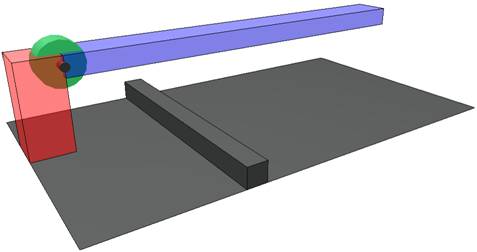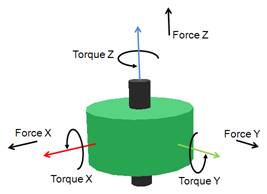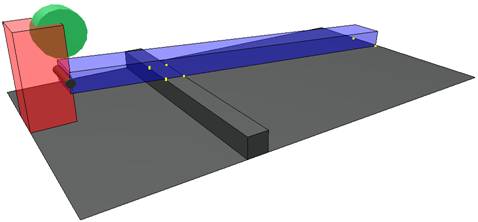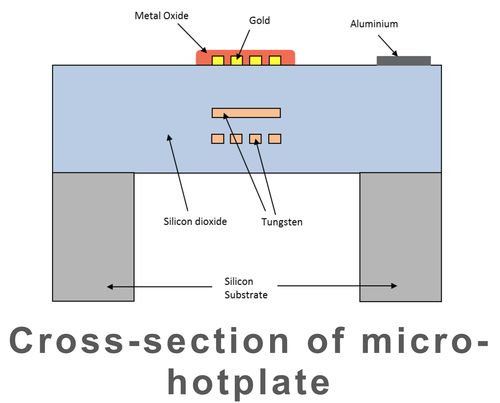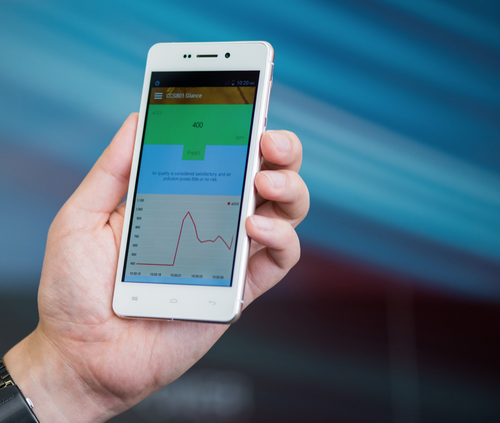Humidity
is the presence of water in air. The amount of water vapor in air can
affect human comfort as well as many manufacturing processes in
industries. The presence of water vapor also influences various
physical, chemical, and biological processes.  Humidity
measurement in industries is critical because it may affect the
business cost of the product and the health and safety of the personnel.
Hence, humidity sensing is very important, especially in the control systems for industrial processes and human comfort.
Humidity
measurement in industries is critical because it may affect the
business cost of the product and the health and safety of the personnel.
Hence, humidity sensing is very important, especially in the control systems for industrial processes and human comfort.
Controlling
or monitoring humidity is of paramount importance in many industrial
& domestic applications. In semiconductor industry, humidity or
moisture levels needs to be properly controlled & monitored during
wafer processing. In medical applications, humidity control is required
for respiratory equipments, sterilizers, incubators, pharmaceutical
processing, and biological products. Humidity control is also necessary
in chemical gas purification, dryers, ovens, film desiccation, paper and
textile production, and food processing. In agriculture, measurement of
humidity is important for plantation protection (dew prevention), soil
moisture monitoring, etc. For domestic applications, humidity control is
required for living environment in buildings, cooking control for
microwave ovens, etc. In all such applications and many others, humidity sensors are employed to provide an indication of the moisture levels in the environment.
RELEVANT MOISTURE TERMS
To
mention moisture levels, variety of terminologies are used. The study
of water vapour concentration in air as a function of temperature and
pressure falls under the area of psychometrics. Psychometrics deals with
the thermodynamic properties of moist gases while the term “humidity’
simply refers to the presence of water vapour in air or other carrier
gas.
Humidity
measurement determines the amount of water vapor present in a gas that
can be a mixture, such as air, or a pure gas, such as nitrogen or argon.
Various terms used to indicate moisture levels are tabulated in the
table below:
S.No
|
Term
|
Definition
|
Unit
|
1
|
Absolute Humidity
(Vapor Concentration)
|
Ratio of mass(vapour) to volume.
|
|
2
|
Mixing Ratio OR Mass Ratio
|
Ratio of mass(vapour) to mass(dry gas)
|
grams/m3
|
3
|
Relative Humidity
|
Ratio of mass(vapour) to mass(saturated vapour) OR ratio of actual vapor pressure to saturation vapor pressure.
|
%
|
4
|
Specific Humidity
|
Ratio of mass(vapour) to total mass.
|
%
|
5
|
Dew Point
|
Temperature(above 0°C) at which the water vapor in a gas condenses to liquid water)
|
°C
|
6
|
Frost Point
|
Temperature(below 0°C) at which the water vapor in a gas condenses to ice
|
|
7
|
Volume Ratio
|
Ratio of partial pressure(vapour) to partial pressure (dry gas)
|
% by volume
|
8
|
PPM by Volume
|
Ratio of volume(vapour) X 106 to volume(dry gas)
|
|
9
|
PPM by Weight
|
PPMV X
|
PPMW
|
Most
commonly used units for humidity measurement are Relative Humidity
(RH), Dew/Frost point (D/F PT) and Parts Per Million (PPM). RH is a
function of temperature, and thus it is a relative measurement.
Dew/Frost point is a function of the pressure of the gas but is
independent of temperature and is therefore defined as absolute humidity
measurement. PPM is also an absolute measurement.
Dew
points and frost points are often used when the dryness of the gas is
important. Dew point is also used as an indicator of water vapor in high
temperature processes, such as industrial drying.
Mixing
ratios, volume percent, and specific humidity are usually used when
water vapor is either an impurity or a defined component of a process
gas mixture used in manufacturing.
Correlation among RH, Dew/Frost point and PPMv is shown below:

HUMIDITY SENSING – CLASSIFICATION & PRINCIPLES
According
to the measurement units, humidity sensors are divided into two types:
Relative humidity(RH)sensors and absolute humidity(moisture) sensors.
Most humidity sensors are relative humidity sensors and use different sensing principles.
A table showing important parameters of different types of humidity sensors is given below:
Active Material
|
Thermo-set
Polymer
|
Thermoplastic
Polymer
|
Thermoplastic
Polymer
|
Bulk Thermoplastic
|
Bulk
AlO3
|
Lithium
Chloride Film
|
Substrate
|
Ceramic or
Silicon
|
Ceramic or
silicon
|
Polyester or
mylar film
|
N/A
|
N/A
|
Ceramic
|
Sensed Parameter
|
Capacitance
|
Capacitance
|
Capacitance
|
Resistance
|
Resistance
|
Conductivity
|
Measured Parameter
|
%RH
|
%RH
|
%RH
|
%RH
|
%RH
|
%RH
|
RH Change
|
0% to 100%
|
0% to 100%
|
0% to 100%
|
20% to 100%
|
2% to 90%
|
15% to <100%
|
RH Accuracy
|
±1% to ±5%
|
±3% to ±5%
|
±3% to ±5%
|
±3% to ±10%
|
±1% to ±5%
|
±5%
|
Interchangability
|
±2% to
±10% RH
|
±3% to
±20% RH
|
±3% to
±20% RH
|
±5% to
±25% RH
|
poor
|
±3% to
±10% RH
|
Hysterisis
|
<1% to 3% RH
|
2% to 5% RH
|
2% to 5% RH
|
3% to 6% RH
|
<2% RH
|
very poor
|
Linearity
|
±1% RH
|
±1% RH
|
±2% RH
|
poor
|
poor
|
Very poor
|
Risetime
|
15 s to 60 s
|
15 s to 90 s
|
15 s to 90 s
|
2 min to 5 min
|
3 min to 5 min
|
3 min to 5 min
|
Temperature
Range
|
-40 °C to
185 °C
|
-30 °C to
190 °C
|
-25°C to
100 °C
|
10 °C to
40 °C
|
-10 °C to
75 °C
|
-
|
Long Term
Stability
|
±1%RH/5 yr
|
±1%RH/yr
|
±1%RH/yr
|
±3%RH/yr
|
±3% RH/yr
|
>1% RH/°C
|
· Sensing Principle
Humidity
measurement can be done using dry and wet bulb hygrometers, dew point
hygrometers, and electronic hygrometers. There has been a surge in the
demand of electronic hygrometers, often called humidity sensors.
Electronic
type hygrometers or humidity sensors can be broadly divided into two
categories: one employs capacitive sensing principle, while other use
resistive effects

Sensors based on capacitive effect:
Humidity
sensors relying on this principle consists of a hygroscopic dielectric
material sandwiched between a pair of electrodes forming a small
capacitor. Most capacitive sensors use a plastic or polymer as the
dielectric material, with a typical dielectric constant ranging from 2
to 15. In absence of moisture, the dielectric constant of the
hygroscopic dielectric material and the sensor geometry determine the
value of capacitance.
At
normal room temperature, the dielectric constant of water vapor has a
value of about 80, a value much larger than the constant of the sensor
dielectric material. Therefore, absorption of water vapor by the sensor
results in an increase in sensor capacitance.
At
equilibrium conditions, the amount of moisture present in a hygroscopic
material depends on both the ambient temperature and the ambient water
vapor pressure. This is true also for the hygroscopic dielectric
material used on the sensor.
By
definition, relative humidity is a function of both the ambient
temperature and water vapor pressure. Therefore there is a relationship
between relative humidity, the amount of moisture present in the sensor,
and sensor capacitance. This relationship governs the operation of a
capacitive humidity instrument.
Basic structure of capacitive type humidity sensor is shown below:
On
Alumina substrate, lower electrode is formed using gold, platinum or
other material. A polymer layer such as PVA is deposited on the
electrode. This layers senses humidity. On top of this polymer film,
gold layer is deposited which acts as top electrode. The top electrode also
allows water vapour to pass through it, into the sensing layer . The
vapors enter or leave the hygroscopic sensing layer until the vapour
content is in equilibrium with the ambient air or gas.Thus capacitive type sensor is basically a capacitor with humidity sensitive polymer film as the dielectric.
Sensors based on Resistive effect:
Resistive
type humidity sensors pick up changes in the resistance value of the
sensor element in response to the change in the humidity. Basic
structure of resistive type humidity sensor from TDK is shown below
Thick
film conductor of precious metals like gold, ruthenium oxide is printed
and calcinated in the shape of the comb to form an electrode. Then a
polymeric film is applied on the electrode; the film acts as a humidity
sensing film due to the existence of movable ions. Change in impedance
occurs due to the change in the number of movable ions.
